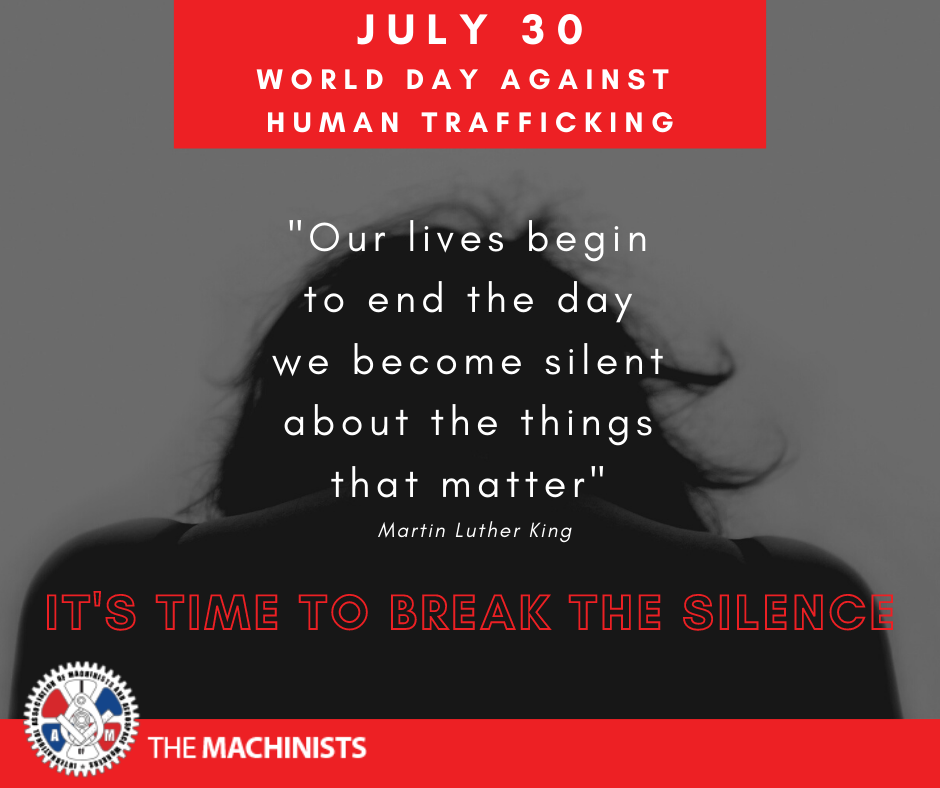

July 30th is World Day Against Trafficking in Persons. Established in 2014, the purpose of World Day Against Trafficking in Persons is to raise awareness about human trafficking and to promote and protect the rights of trafficking victims.
What is Human Trafficking?
The formal definition in the dictionary of human trafficking is “the unlawful act of transporting or coercing people in order to benefit from their work or service, typically in the form of forced labor or sexual exploitation” (Oxford Dictionary). Traffickers see their victims as commodities, without regard for dignity or human rights. They sell people for a price that can range from tens to thousands of US Dollars, with large criminal organizations making the highest incomes. Every country in the world is affected by human trafficking, whether as a country of origin, transit, or destination for victims—or sometimes all three.
Most women and girl victims were trafficked for sexual exploitation, whereas men and boys were mainly trafficked for forced labor. For every 10 victims detected globally in 2018, about five were adult women and two were young girls. Around 20 per cent of human trafficking victims were adult men and 15 per cent were young boys.
Conflict further exacerbates vulnerabilities, with armed groups exploiting civilians and traffickers targeting forcibly displaced people. This crime has proliferated during the COVID-19 pandemic, as women, children, and men worldwide are out of work, out of school, and without social support—leaving them at the mercy of criminal traffickers seeking to take advantage of the pandemic to exploit the vulnerable.
Did you know that IAM advocated for its members in our Transportation Territory, both in the United States and Canada to be trained to spot, take action, and alert authorities for those who may be in human trafficking?
“Airline workers can be the last lines of defense when it comes to human trafficking. So it is extremely important they are knowledgeable and know what signs to look for, how to respond and how to report the suspected activity,” according to Sara Gonzales, DL 142 General Chair. Customer service agents and/or flight attendants are trained annually on how to spot and report someone who may be a victim of human trafficking or otherwise involved in human trafficking.
Get more involved today and join your Local Lodges Human’s Rights and/or Women’s Committee.
Facts About Human Trafficking
Source: United Nations Office on Drugs and Crime
References:
https://www.compassion.com/world-days/world-day-against-trafficking-in-persons.htm
https://www.unodc.org/unodc/en/human-trafficking/human-trafficking.html